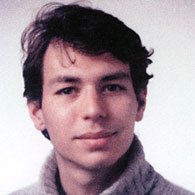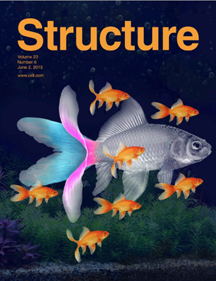News
Paper accepted by Microscopy journal
Posted by: Melissa Thomas Baum |
October 6, 2015 |
No comment
Read More
Li et al. ribosome-EF-G complex featured in editorial
Posted by: Melissa Thomas Baum |
September 30, 2015 |
No comment
Read More
“The Sky Would be the Limit”
Posted by: Joachim Frank |
September 22, 2015 |
No comment
Research News article published in Science entitled “Electron Microscopy: Imaging Molecules in Three Dimensions,” starts by explaining the principles of 3D reconstruction using Jim Lake’s now-familiar cartoon with ducks and their transforms. The article then goes on with an appreciation...
Read More
Paper accepted by Nucleic Acids Research journal
Posted by: Melissa Thomas Baum |
September 21, 2015 |
No comment
ABSTRACT: Plasmodium falciparum, the mosquito-transmitted Apicomplexan parasite, causes the most severe form of human malaria. In the asexual blood-stage, the parasite resides within erythrocytes where it proliferates, multiplies and finally spreads to new erythrocytes....
Read More
Paper accepted by Nature
Posted by: Melissa Thomas Baum |
September 16, 2015 |
No comment
Read More
Happy birthday, Joachim!
Posted by: Melissa Thomas Baum |
September 16, 2015 |
No comment

Read More
Amédée Des Georges accepts position at CUNY
Posted by: Melissa Thomas Baum |
August 26, 2015 |
No comment
 Frank Lab post doc, Amédée Des Georges, has been named Assistant Professor with the Structural Biology Initiative at CUNY's newly constructed Advanced Science Research Center (ASRC) located at 85 St. Nicholas Terrace.
Frank Lab post doc, Amédée Des Georges, has been named Assistant Professor with the Structural Biology Initiative at CUNY's newly constructed Advanced Science Research Center (ASRC) located at 85 St. Nicholas Terrace. Read More
Structure’s June 2015 cover and Q&A
Posted by: Melissa Thomas Baum |
June 15, 2015 |
No comment
 The June 2015 cover of Structure is an illustration by Melissa Thomas-Baum and Hstau Y. Liao. It accompanies this article published in the same issue: Liao, H.Y., Hashem, Y., and Frank, J. (2015). Efficient estimation of three-dimensional covariance...
The June 2015 cover of Structure is an illustration by Melissa Thomas-Baum and Hstau Y. Liao. It accompanies this article published in the same issue: Liao, H.Y., Hashem, Y., and Frank, J. (2015). Efficient estimation of three-dimensional covariance...Read More
Advances in 3D covariance estimation
Posted by: Melissa Thomas Baum |
June 4, 2015 |
No comment
Read More
“Time-resolved study of ribosome subunit association”
accepted by Structure
Posted by: Joachim Frank |
April 8, 2015 |
No comment
Read More



